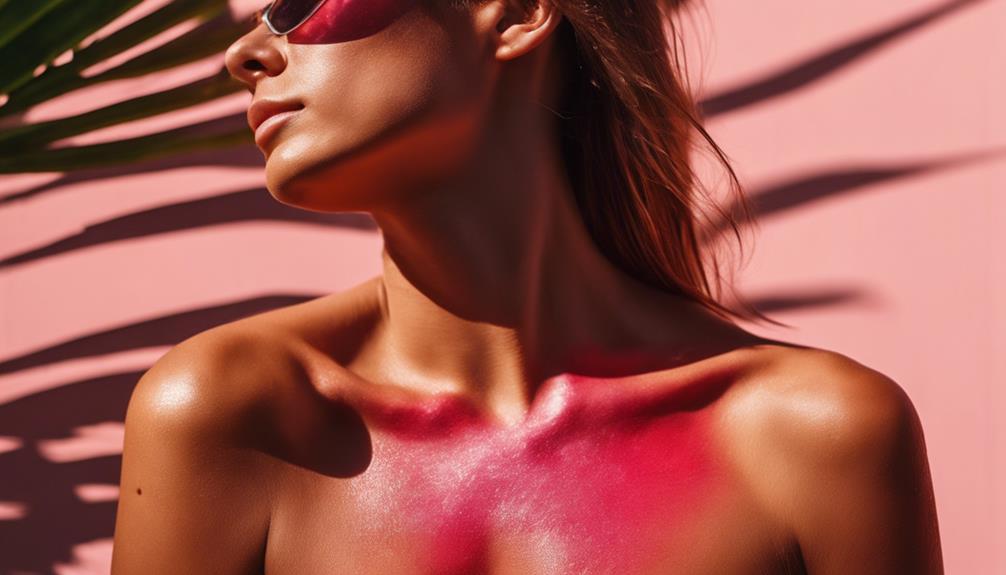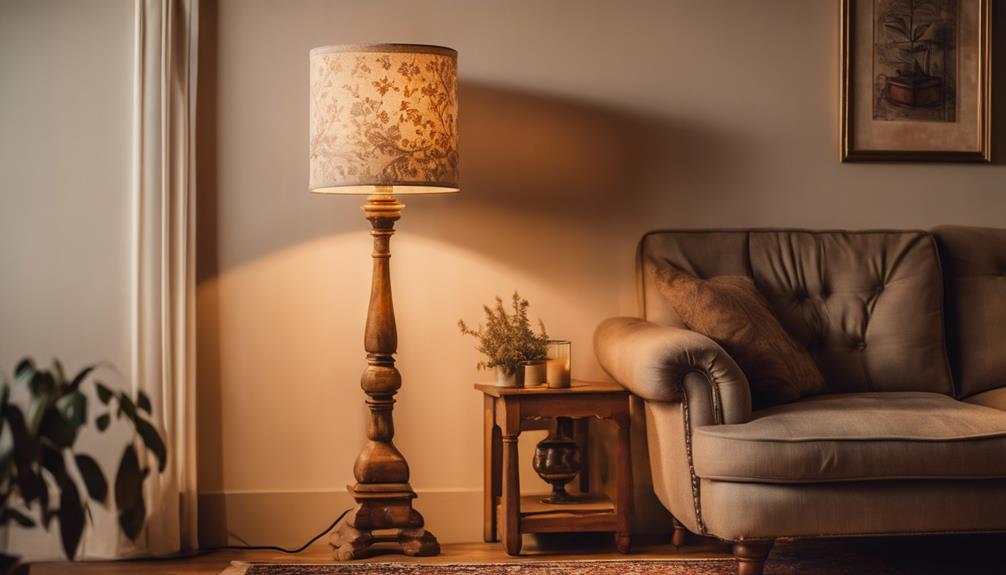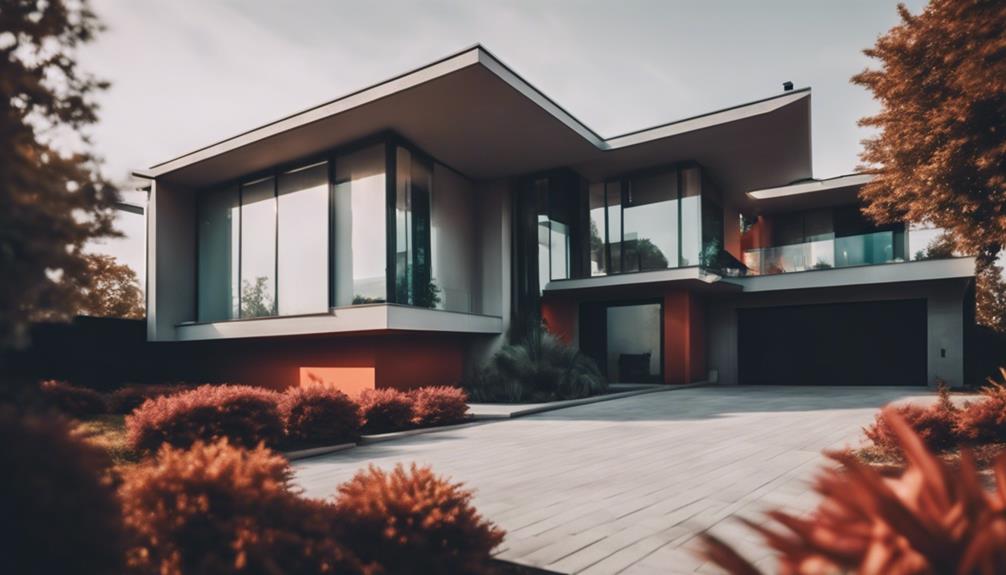If your skin burns instead of tanning, it likely means your melanin levels are too low to shield against UV rays. Skin types 1 and 2 are especially prone to burning because they don't have enough natural defense. Sunburn indicates skin damage, signaling that you've overexposed yourself to harmful UV radiation. Remember, tanning isn't a protective mechanism—it can increase your risk for skin cancer and premature aging. To protect your skin, always use broad-spectrum sunscreen, even if you want that bronzed look. Want to learn more about optimizing your sun safety and exploring safer alternatives? One alternative to tanning for achieving a bronzed look is using self-tanning products or getting a spray tan. These methods can provide the desired appearance without the harmful effects of UV rays. Additionally, prioritizing skin health and using protective measures like hats and UPF clothing can help minimize the risk of sun damage. It’s important to remember that there are no health benefits of tanning, despite myths about the benefits of tanning for weight loss. These myths are not only false but can also lead to dangerous behavior and health risks.
Key Takeaways
- Skin burns instead of tanning due to excessive UV exposure that damages skin cells, triggering an inflammatory response.
- Fitzpatrick skin types indicate varying levels of melanin, affecting how skin reacts to UV rays; lighter skin types are more prone to burning.
- A sunburn signifies skin damage, which does not lead to a healthy tan but instead increases the risk of skin cancer.
- Higher melanin levels provide some protection, but all skin types can still burn if exposed to intense UV radiation.
Skin Types and Melanin Explained
Understanding your skin type and its melanin levels is key to knowing how your skin reacts to sun exposure and why it might burn instead of tan. For example, individuals with fair skin and lower levels of melanin are more susceptible to sunburn because their skin has less natural protection against UV rays. Conversely, those with darker skin and higher levels of melanin have more natural sun protection, which means they are less likely to burn and more likely to tan. Understanding these differences can help you take appropriate precautions when spending time in the sun, and it’s important to debunk any calorie burning myths associated with tanning, such as the idea that getting a sunburn will help you lose weight. In reality, sunburn can cause serious damage to the skin and increase the risk of skin cancer.
The Fitzpatrick skin type scale ranges from Type 1, which includes fair skin that burns easily, to Type 6, which has rich melanin and rarely burns.
If you're in Types 1 or 2, you're more prone to freckling and burning, while Types 5 and 6 enjoy greater protection from sun damage due to higher melanin levels.
However, no matter your skin type, you still need sun protection.
Melanin acts as a natural defense against UV rays, but understanding your skin type helps you adopt effective sun safety practices tailored to your unique needs.
Effects of UV Radiation
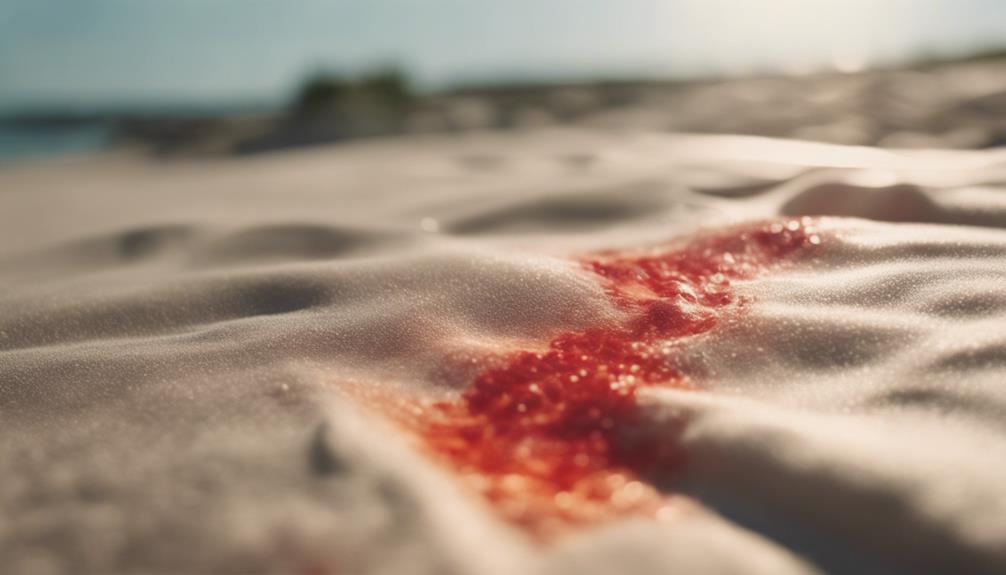
UV radiation can cause significant skin damage, often leading to burns instead of the desired tan, especially for those with fairer skin types.
The harmful effects of UV rays can manifest in various ways, and understanding these impacts is essential for your skin's health:
- Sunburn: Red, painful skin signaling damage from excessive UV exposure.
- Premature Aging: Wrinkles, fine lines, and age spots develop due to chronic UV damage.
- Skin Cancer Risk: Repeated UV exposure increases the likelihood of developing skin cancers.
Myths About Tanning

Many people believe myths about tanning that can lead to harmful practices and skin damage. One common myth is that having a base tan prevents sunburn, but that's just not true. A base tan offers minimal protection and can still result in burning.
Another misconception is that tanning beds are a safer alternative to natural sunlight; in reality, they can increase your skin cancer risk just like direct sun exposure.
Additionally, some think that darker skin types don't need protection, but all skin types require sunscreen to prevent damage.
Safe Tanning Practices
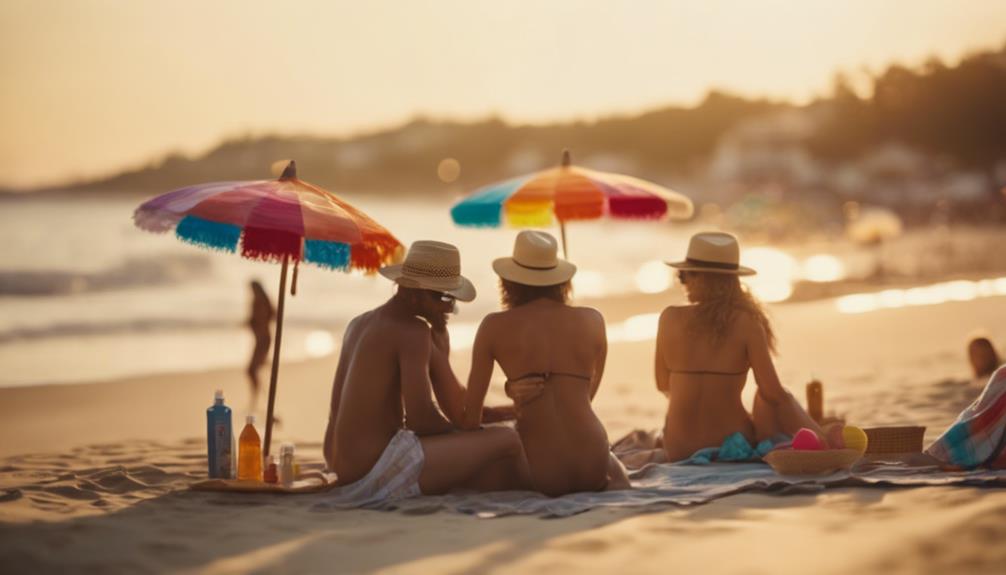
To achieve a safe tan without damaging your skin, it's essential to follow a few key practices that prioritize your health. By being mindful of your sun exposure and using protective measures, you can enjoy a bronzed look while minimizing risks.
- Apply a broad-spectrum sunscreen with at least SPF 30, reapplying every two hours.
- Avoid sun exposure during peak hours, typically between 10 a.m. and 4 p.m.
- Wear protective clothing, such as hats and UV-blocking sunglasses, to shield your skin.
Preventing Skin Damage

Since protecting your skin is essential for long-term health, implementing effective strategies can help prevent damage from sun exposure.
First, always apply a broad-spectrum sunscreen with at least SPF 30, even on cloudy days. Reapply every two hours, especially after swimming or sweating.
Avoid the sun during peak hours, typically between 10 a.m. and 4 p.m., when UV rays are strongest. Wearing protective clothing, like long sleeves and wide-brimmed hats, can also shield your skin.
Don't forget sunglasses to protect your eyes and surrounding skin. Finally, consider using self-tanners for a bronzed look without UV exposure.
Regularly check your skin for any changes, and consult a professional if you notice anything unusual.
Understanding Your Skin Reaction
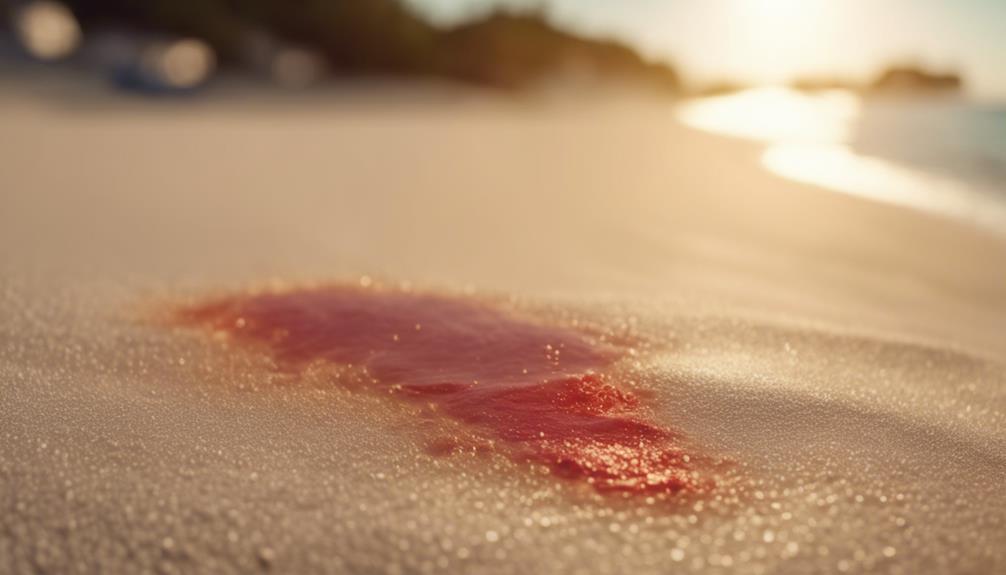
Understanding how your skin reacts to UV exposure is essential for choosing the right sun protection methods. Your skin type plays a significant role in how you respond to sunlight, and recognizing this can help you protect yourself effectively.
Here are some key points to reflect on:
- Fitzpatrick Skin Types: Fair skin burns easily, while darker skin has more natural protection.
- Melanin Production: Higher melanin levels offer some defense against UV rays, but everyone can burn.
- Sunburn vs. Tanning: A burn signals skin damage, not a pathway to a tan.
Alternatives to Natural Tanning

Many people seek alternatives to natural tanning to achieve a sun-kissed glow without risking skin damage from UV exposure. Fortunately, there are several options available that can give you that bronzed look safely:
| Alternative Method | Description |
|---|---|
| Self-Tanners | These products contain DHA, which darkens the skin without UV rays. |
| Bronzing Lotions | Instant color with moisturizing benefits; wash off with soap. |
| Spray Tans | Professionally applied for an even finish; lasts about a week. |
| Tanning Pills | Oral supplements that claim to enhance your tan; consult a doctor first. |
Frequently Asked Questions
How Does Hydration Affect My Skin's Tanning Ability?
Hydration greatly impacts your skin's health, affecting its ability to tan. Well-hydrated skin retains elasticity, appears plumper, and can better withstand UV exposure, making it more resilient during sun exposure while promoting an even tan.
Can Diet Influence How My Skin Reacts to UV Exposure?
Your skin's reaction to UV exposure is like a garden; a nutritious diet nurtures it. Antioxidants, vitamins, and hydration can enhance your skin's resilience, helping it better cope with harmful rays and promoting a healthier glow.
What Role Do Genetics Play in Tanning Versus Burning?
Genetics play a significant role in how your skin reacts to UV exposure. Your inherited traits determine melanin production, influencing whether you tan or burn, highlighting the importance of understanding your unique skin type for effective sun protection.
Does Age Affect My Skin's Ability to Tan?
Yes, age does affect your skin's ability to tan. As you get older, your skin produces less melanin, making it harder to achieve a tan and increasing the likelihood of burning. Always prioritize sun protection!
Are Certain Medications More Likely to Cause Skin Burning?
Certain medications, like antibiotics and anti-inflammatory drugs, can increase your skin's sensitivity to sunlight. If you're taking them, it is crucial to use sunscreen and limit sun exposure to prevent burning and skin damage.
Is Post-Tanning Itch Related to Skin Burning Instead of Tanning?
The posttanning itch mystery unraveled: The uncomfortable itching sensation after tanning may actually be related to skin burning rather than the tanning process itself. When skin is overexposed to UV rays, it can result in burning and subsequent itching. Proper skincare and avoiding overexposure can help alleviate this issue.
Conclusion
Now that you understand why your skin might burn instead of tan, it's essential to prioritize your sun safety. To protect your skin from burning, be sure to apply a broad-spectrum sunscreen with a high SPF, seek shade during the sun’s peak hours, and wear protective clothing. Additionally, consider alternatives to natural tanning such as using a self-tanner or trying the ultimate tanning bed experience at a reputable salon. Taking these precautions will help prevent skin damage and promote a healthy, sun-kissed glow.
Did you know that individuals with fair skin are up to 10 times more likely to suffer from skin cancer than those with darker skin? This highlights the importance of knowing your skin type and taking protective measures.
By practicing safe tanning and applying sunscreen regularly, you can enjoy the sun while greatly reducing your risk of damage.
